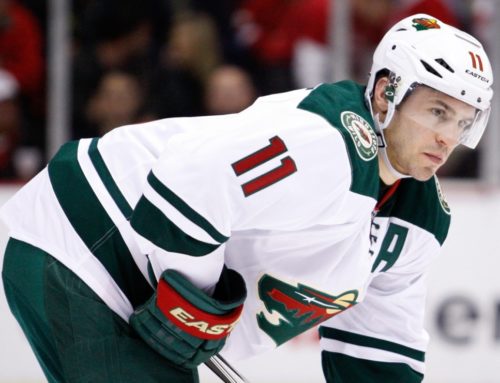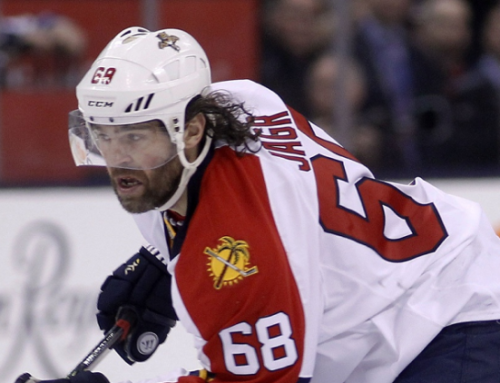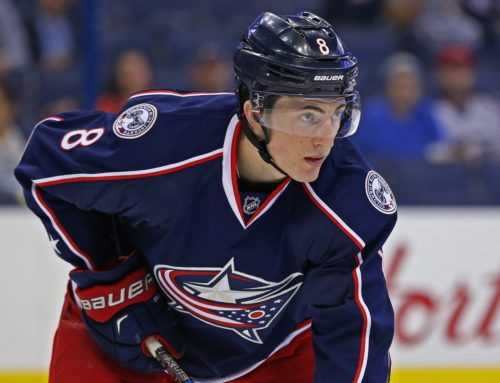The Contrarian – Are you a Pigeon?
Dobber Sports
2013-10-13

The Contararian begs you to ask yourself honestly: are you a pigeon?
Look at the question in the title and write down "Yes, I am a pigeon" or "No, I am not a pigeon" on a piece of paper. The answer will be given at the end of this article.
This week we are looking at Darren Kennedy's column Looking Back…at April, 2003 Top Players.
I will deal with the adage of drafting in the early rounds and his assertions on asset management while bringing context.
If you read my last article then you know how I feel about adages like "don't worry about the early rounds; they'll take care of themselves".
Darren says in his own words, "The rationale for this is that rounds one through three are littered with top tier players, so whether you end up with Zetterberg or Toews or whomever, the difference is minor. Where poolies can have a significant impact is in the mid to late rounds, where nabbing Justin Williams while someone else is picking Martin Havlat can swing the pendulum mightily."
Not only do I feel that this adage is false but the exact opposite should be done. Concern yourselves about the early rounds, especially in yearly pools, because it is in the early rounds where you can lose the most ground.
In the very next season, 2003-04, Martin St. Louis was the leading scorer with 94 points. Bobby Holik had 56 points and was ranked 46th overall. That is a difference of 48 points.
The next 46 players, from 47th to 94th, range from 55 to 47 points for a difference of only eight points.
If that isn't enough to convince you, then we will take Dobber's Top 50 and draft in exact order as ranked for 10, 12, 14 and 16 team leagues. (Green = winner, yellow = last)

There is such a wide range between first and last, yet the adage says not to worry. Everything is going to be close enough. Dobber's rankings are not the issue. The Hockey News Pool Guide Predictions are very similar with only 12 different players in their top 50 list and they had St. Louis ranked 70th. Talk about a big faux pas!
If I were to take the real points of the best set of players outside of the top 50 list, adjusting for how many round each league drafted, I would end up in either first, second or third place in the leagues.
The biggest factor was St. Louis and the team that drafted him ended up in first place in three of the simulations. The only one that did not end up in first was in the 14 team league.
That is how the vast majority of people were thinking though and that brings me to asset management and the context of the time.
I have no issue with asset management in general but with his example of Peter Forsberg, aging veterans and what he thinks the rate of return would have been.
At that time, I did have Peter Forsberg. Not that it matters to everyone, but in the summer of 2001 I traded Eric Daze, a first round pick and a fourth round pick for him plus some playoff picks. The first and fourth round picks turned out to be Ron Francis and Ed Jovanovski. I also made a similar type deal to get Ziggy Palffy because I was going for it. One other note, giving up extra players meant that my roster size and bench were reduced. So I paid a big price.
In the 2003-04 season I came close but I didn't win. Needed another 22 points and I also didn't win any playoff prize because Colorado was knocked out early. This was the stacked Colorado team with Sakic, Tanguay, Hejduk, Forsberg, Blake, Kariya, Selanne and others. The results were far less than what I had anticipated.
My point is that if your team was in contention and Forsberg was playing on such a powerhouse, you would not trade him. You were trying to win.
After that season I was shopping Forsberg around but I couldn't get the windfall package that Darren describes but in the summer of 2006 I traded him away in a deal that got me an extra player back. So Forsberg was not worthless to me and he still had value.
The value existed because of the type of injuries he was going through. There were no hints that he had major problems with his feet in the years were he was producing. So you could sell someone on the hope he would come back and be productive.
With regards to the age factor look at the top 50 list again. More than half (28) of the players on that list were over 29 years of age. That is a lot of supply.
Who would you sell guys like Forsberg too? Must be owners that think they have a chance to win. You could not trade him to a team that was rebuilding. There is a demand but it is in short supply and would they give up as much as Darren projects? It is not as simple as it seems.
Even if you trade Forsberg or a similar over 30 year old player for prospects there was no guarantee that you would have success with what you got in return.
Brian Costello wrote in The Hockey News Ultimate Pool Guide 2003-04 edition, "We're predicting an NHL first. Not one player taken in June's first round will crack an NHL roster in 2003-04. Not for a full season, anyway."
Players that were listed as top prospects for each team in that guide were Lupul, Lehtonen, Morrisonn, Ryan Miller, Kobasew, Heerema, Tuomo Ruutu, Sauve, Leclaire, Bacashihua, Grigorenko, Rita, Krajicek, Grebeshkov, Mikko Koivu, Perezhogin, Upshall, Ahonen, DiPietro, Tyutin, Emery, Pitkanen, Taffe, Ryan Whitney, Pohl, Boyes, Polushin, Colaiacovo, Kolstov and Eminger. Unless your pool includes goalies, that was not a windfall group.
Which brings me to my last point about the context of the situation, it was before the lockout.
Back then teams were paying and playing veterans. Younger guys were not given much ice time because the vets were being paid big dollars. Take a look at the Sedin twins. Darren asks us to forgive Dobber about not predicting them to blossom but Dobber was right. In 2003, the style of hockey that was being played was not helping them produce.
After the lockout all that had to change. The 2003 draft class that was not predicted to play much in the 2003-04 season was given great opportunities to play after the lockout because they were cheaper to ice. Clutching and grabbing was being addressed by the enforcement of the rules and the Sedin's showed us their skills. Veterans were being filtered off of teams.
In the summer of 2003, most people did not expect a lockout. Nobody anticipated the changes that would occur.
As I finish up this column I want to provide a little adage a friend of mine likes to say, "Some days you are the pigeon and some days you are the statue". You make now look at what you wrote earlier on that piece of paper.
I sure hope you wrote that you were a pigeon because I would not want to be the statue they poop all over. Context is important.
Read more from The Contrarian





 NYR
NYR WSH
WSH FLA
FLA T.B
T.B WPG
WPG COL
COL VAN
VAN NSH
NSH EDM
EDM TOR
TOR BOS
BOS CAR
CAR VGK
VGK
